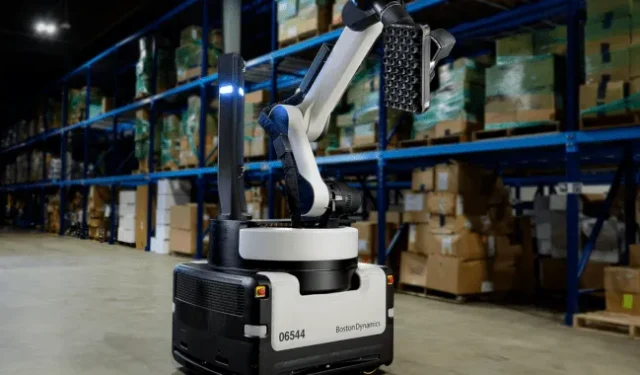Boston Dynamics ‘Stretch’ robot is in production and sold out

Boston Dynamics has launched its second commercial robot. After debuting its four-legged Spot robot dog on the market in 2020 for $75,000, the company is now showing off a commercial version of Stretch, a warehouse crate moving robot that is available for purchase.
Stretch appeared in prototype form in March 2021, and after a year of field trials and additional development, it was developed into a commercial product. The purpose of the bot remains the same: it is the transportation of boxes. Stretch is the warehouse worker who must quickly take over truck unloading, crate unpacking, and order picking without the need for additional infrastructure.
Crate moving arms are nothing new, but they are usually stationary, which means you need to attach them to the floor at a specific location and design your warehouse around the robot’s location. The Stretch is mounted on a large wheelbase so it has more human flexibility in what it can do during the day. You can ask Stretch to drive straight into the truck and unload the box in the morning and then proceed to the order building in the afternoon. The base is the same size as the pallet, so it can be placed almost anywhere in the warehouse.
The commercial version of Stretch has changed a lot from last year’s prototype. Boston Dynamics tells us that the production version is “designed to scale”and that component improvements have been made to help with manufacturability and cost. One of the new features is that if a stack of boxes falls, Stretch can autonomously recover the fallen boxes. The commercial version of the Stretch can lift up to 50 pounds and run for 16 hours with a high capacity battery.
If you zoom in on the photos, many of the panels in the database look surprisingly 3D printed. There are raised steps around the perimeter of the white front panel, and the round base shows horizontal lines from print layers and vertical stripes from individual polygons that represent a circle in the CAD file. With the Hyundai acquisition, I was expecting a more car-like manufacturing process (large fiberglass panels), but it looks like we haven’t gotten there yet.
If we start with the commercial part of Stretch, the vacuum box gripper is now box-shaped – a rectangle – instead of the prototype’s hexagonal gripper with 50 small suction heads instead of the 18 large heads on the prototype. The lever geometry is completely different. The prototype Stretch had a large arc in each arm segment, while the commercial Stretch uses more traditional, straight arm segments. Where the arm meets the base, the Stretch prototype was shaped like a large white rectangle that slightly resembled the torso, while the commercial version turns it into a round base on top of a large square chassis. In both versions, this base rotates as the main turning point of the robot, so it makes sense that it is round.
The Stretch is available for purchase, but the price hasn’t been disclosed, so you’ll have to call Boston Dynamics sales. For what it’s worth, Stretch has apparently already become a hit. A company press release states that “Stretch has been pilot testing with a select group of customers over the past few months. All devices scheduled for delivery in 2022 have already sold out due to strong demand from these early customers.” Boston Dynamics is now accepting Stretch bookings for 2023 and 2024.
Clients currently include DHL, Gap, H&M and logistics company Performance Team. DHL placed a $15 million multi-year order that was announced in January. This deal has apparently come with a nice new paint job and DHL will now have the signature yellow robots running around the warehouse. Unfortunately, there is no video of the new bot in action on YouTube yet.
Leave a Reply